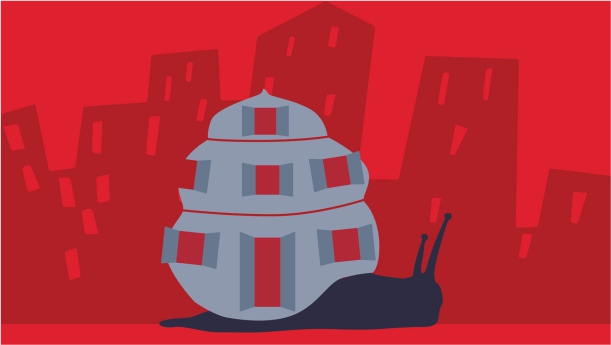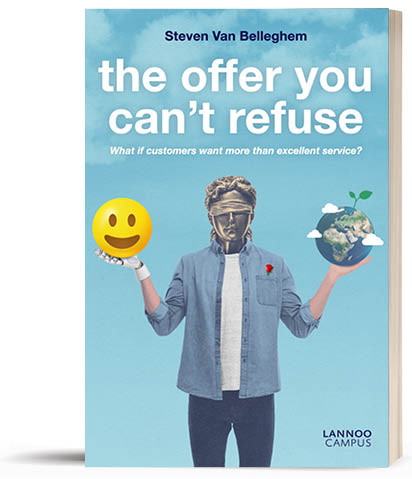
Summary: Your customers want you to save the world. People have many different, and very real, worries about the future, including health, climate, technology and more. As a company, you must be seen to be taking your responsibilities seriously and making a contribution towards relieving one or more of these worries.
I admit that ‘saving the world’ might sound a little bombastic. After all, should it really be the role of companies to try and save the world? Isn't that a task for governments? Or perhaps it should even be a task for us all, through a greater sense of global solidarity?
Well, according to the annual 'trust barometer' published by the American PR and marketing advice bureau Edelman, no fewer than 76 per cent of the population hope that CEOs will become the driving force behind positive change in the world. So how do you and your company measure up?
There is no disputing that companies already have a huge impact on the world and on society. Companies not only generate economic value, but also social value and societal happiness. The world is facing so many daunting challenges that companies are morally obliged to consider how they can make a positive contribution that will improve things for some of us, if not all of us.
The weakness of a purpose
In recent decades, CEOs, HR teams, and marketeers have talked for countless hours about their purpose. In your company as well? I bet. The problem is that there is no uniform definition of what the 'purpose' concept is supposed to be. Some company leaders define purpose as creating social added value. Others talk in terms of the problems their company solves for their customers. Yet others see purpose as the company's raison d'être, the reason for which it was founded.
Within the 'purpose' discussion, reference is most frequently made to Simon Sinek and his world-famous book Start with why. In this book he describes the 'golden circle' concept. Companies need to ask themselves three key questions.
What do we do?
How do we do it?
Why do we do it?
Most organisations do indeed begin with the 'what'. Many company presentations start with statements like: 'We are a company that sells unique lawnmowers.' Only later will they move on to the 'how'. 'Our lawnmowers are fitted with stateof-the-art AI, allowing them to mow your lawn automatically and with a perfect finish.' But that is where most of the presentations stop. Occasionally, someone will add a 'why'. 'We want to create more free time for families, so that they can enjoy their perfectly mown lawn.' Simon Sinek's theory teaches us that we should always use the 'why' and not the 'what' as the starting point for a company's strategy and communication. It is a very simple but unbelievably powerful model, and one which has conquered the world.
There is, however, a snake in the grass. The most 'start with why' and 'purpose' discussions end with a declaration with which everyone in the company is in agreement, but which has no differentiating effect whatsoever. I have the pleasure of working for many major players in important industries, so that I regularly get to see what goes on behind the scenes. I have lost count of the number of 'start with why' and 'purpose' slides I have been forced to sit through and in one sense this is positive–were it not for the fact that in my eyes the huge majority of them say nothing about what makes the company so special and so different from its competitors.
A purpose can be effective, but only if it allows you to distinguish yourself and gives a clear direction to your strategy, resulting in concrete actions and behaviour. Sadly, in my experience the purpose of most companies fails to meet these criteria.

What societal problems will your company solve?
In many cases, a purpose statement is just too woolly and, as a result, misses real impact. A good alternative is to think in concrete terms about a societal problem that you can (help to) solve.
During the coronavirus pandemic, we have seen many good examples of this around the world. As the crisis developed, many companies identified specific needs in society and used their strengths to satisfy those needs, wholly or in part. These were worthwhile actions in the short term that had immediate positive effects. And for many of these companies this also yielded a lot of positive PR, making both staff and customers feel proud to be associated with the company name.
The actions in the early stages of the crisis were mainly of a temporary nature. Some of the finest examples were those where companies were able to make an important contribution based on their own strengths. At one point, Lego was producing 13000 face masks per day as the company reconfigurated its machines, so that they were able to help people in the care sector in a concrete way. A nice extra touch was that the masks looked exactly like the plexiglas in the helmets on the miniature Lego figures that children around the world play with every day. And once the Lego masks arrived in hospitals, the medical staff still had to clip them together, providing them with a genuine Lego experience! The willingness of companies and individuals to help during the crisis was heart-warming, and it is a great example of how the solving of societal problems can give a boost to people's energy and sense of solidarity.
The challenge now will be to maintain this same altruistic mindset in the years to come, even once the crisis has passed. I am hopeful that many companies will now seize the opportunity offered by these world-changing events to think more deeply about their societal impact—first and foremost because it is the right thing to do, but also because it will help them to differentiate themselves from their competitors.
As a company, you don't need to wait for the next world crisis before you start to consider what you can do to improve society. The crucial question is to decide which social problems the strengths of your company are best suited to help solve.
The strength of tackling real problems in a concrete way is that it brings clarity. It is not an everlasting mission that is always on the horizon; it is a specific challenge. Every employee and every customer will know exactly what problem you are trying to solve, which also makes your communication about objectives clear and transparent. Likewise, measurability will be similarly straightforward. By making the right choices, the world will be able to follow the extent to which you are getting closer and closer to your goal.
Certain aspects of the 'purpose' philosophy can still be very useful when formulating your societal objective. Just like a purpose, a societal objective makes crystal-clear exactly what course you intend to steer and what things in society truly matter to you.
So, how are you going to save the world?
The question I would like everybody reading this article to ask themselves is how you–together with your customers and your employees–can create real, societal added value. People have many different, and very real, worries about the future, including health, climate, technology and more. As a company, you must be seen to be taking your responsibilities seriously and making a contribution towards relieving one or more of these worries. It may only be in a very small way that affects your local community, but you will be helping to make the world a better place and you will reap the customer and employee engagement rewards that this brings with it.
Log In or become an AIMA member to read more articles
